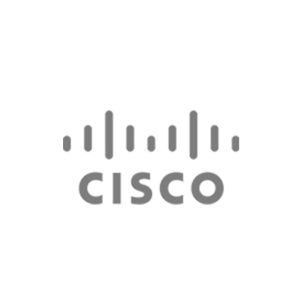Description
Who should attend
The target audience is Service Provider and Enterprise network engineers that design, deploy and maintain core IP routing network infrastructures.
Primary target audience:
This course is intended primarily for network administrators, network engineers, network managers and systems engineers who would like to implement MPLS and MPLS Traffic Engineering.
Secondary target audience:
Network designers and project managers.
Prerequisites
The knowledge and skills recommended before attending this course are:
Cisco Certified Network Associate (CCNA) certification or equivalent level of working knowledge and experience
Configuring Border Gateway Protocol (BGP) on Cisco routers
Practical experience with deploying and operating networks based on Cisco network devices and Cisco IOS is strongly recommended
The QoS course is highly recommended because QoS knowledge is assumed in several sections of the course Implementing Cisco Quality of Service (QOS)
Course Objectives
Learners will gain design, implementation, and verification skills for a MPLS VPN domain capable of multiple customer sites with managed central services and Internet access.
Upon completing this course, the learner will be able to meet these overall objectives:
Describe the features of MPLS
Describe how MPLS labels are assigned and distributed
Configure and troubleshoot frame-mode MPLS on Cisco IOS platforms
Describe the MPLS peer-to-peer architecture and explain the routing and packet-forwarding model in this architecture
Configure, monitor, and troubleshoot VPN operations
Describe how the MPLS VPN model can be used to implement managed services and Internet access
Describe the various Internet access implementations that are available and the benefits and drawbacks of each model
Describe the tasks and commands that are necessary to implement MPLS Traffic Engineering
Follow On Courses
Implementing Cisco Quality of Service (QOS)
Outline: Implementing Cisco MPLS (MPLS)
Course Outline:
MPLS Features
Introducing Basic MPLS Concepts
Introducing MPLS Labels and Label Stack
Identifying MPLS Applications
Label Assignment and Distribution
Discovering LDP Neighbors
Introducing Typical Label Distribution in Frame-Mode MPLS
Introducing Convergence in Frame-mode MPLS
Frame-Mode MPLS Implementation on Cisco IOS Platforms
Introducing Cisco Express Forwarding (CEF) Switching
Configuring Frame-Mode MPLS on Cisco IOS Platforms
Monitoring Frame-Mode MPLS on Cisco IOS Platforms
Troubleshooting Frame-Mode MPLS on Cisco IOS Platforms
MPLS VPN Technology
Introducting Virtual Private Networks
Introducing MPLS VPN Architecture
Introducing the MPLS VPN Routing Model
Forwarding MPLS VPN Packets
MPLS VPN Implementation
Using MPLS VPN Mechanisms of Cisco IOS platforms
Configuring an MP-BGP Session Between PE Routers
Configuring VRF Tables
Configuring Small-Scale Routing Protocols Between PE and CE routers
Monitoring MPLS VPN Operations
Configuring OSPF as the Routing Protocol Between PE and CE Routers
Configuring BGP as the Routing Protocol between PE and CE Routers
Troubleshooting MPLS VPNs
Complex MPLS VPNs
Introducing Overlapping VPNs
Introducing Central Services VPNs
Introducing the Managed CE Routers Service
Internet Access and MPLS VPNs
Combining Internet Access with MPLS VPNs
Implementing Internet Access in the MPLS VPN Environment
MPLS Traffic Engineering Overview
Introducing MPLS Traffic Engineering Components
MPLS Traffic Engineering Operations
Configuring MPLS Traffic Engineering on Cisco IOS Platforms
Monitoring Basic MPLS TE on Cisco IOS Platforms
Lab Outline:
Discovery 1: Verifying CEF Switching
Discovery 2: Enabling MPLS
Discovery 3: Change IP TTL Propagation
Discovery 4: Configure MP-IBGP
Discovery 5: Configure the VRF Instances
Discovery 6: Configure RIP as a PE-CE Routing Protocol
Discovery 7: Configure EIGRP as a PE-CE Routing Protocol
Discovery 8: Configure OSPF as a PE-CE Routing Protocol
Discovery 9: Configure BGP as a PE-CE Routing Protocol
Discovery 10: Configure a Central Services VPN
Discovery 11: Configure MPLS Traffic Engineering
Challenge 1: Implement the Service Provider’s and Customer’s IP Addressing and IGP Routing
Challenge 2: Implement the Core MPLS Environment in the Service Provider Network
Challenge 3: Implement EIGRP Based VPNs
Challenge 4: Implement OSPF Based MPLS VPNs
Challenge 5: Implement BGP Based MPLS VPNs
Challenge 6: Implement MPLS Traffic Engineering


